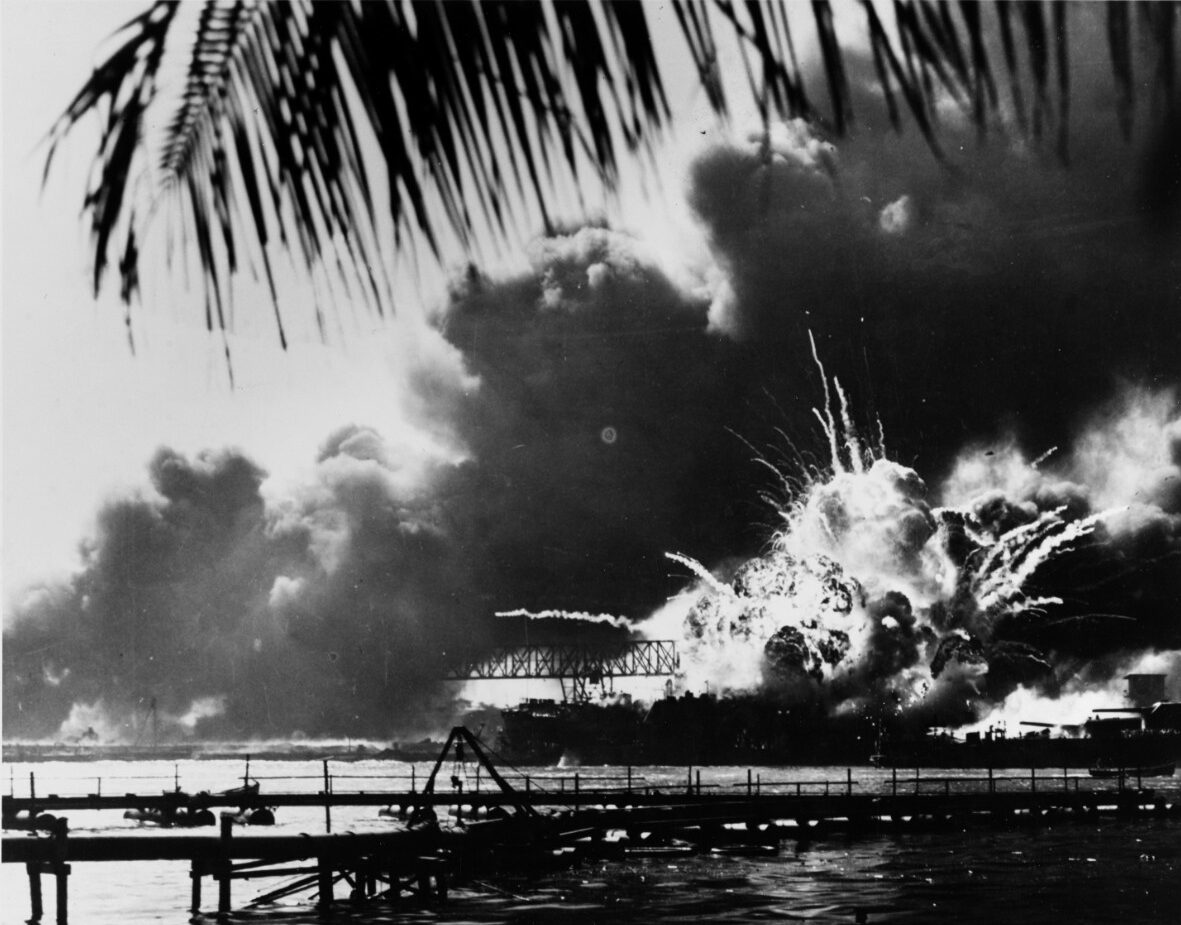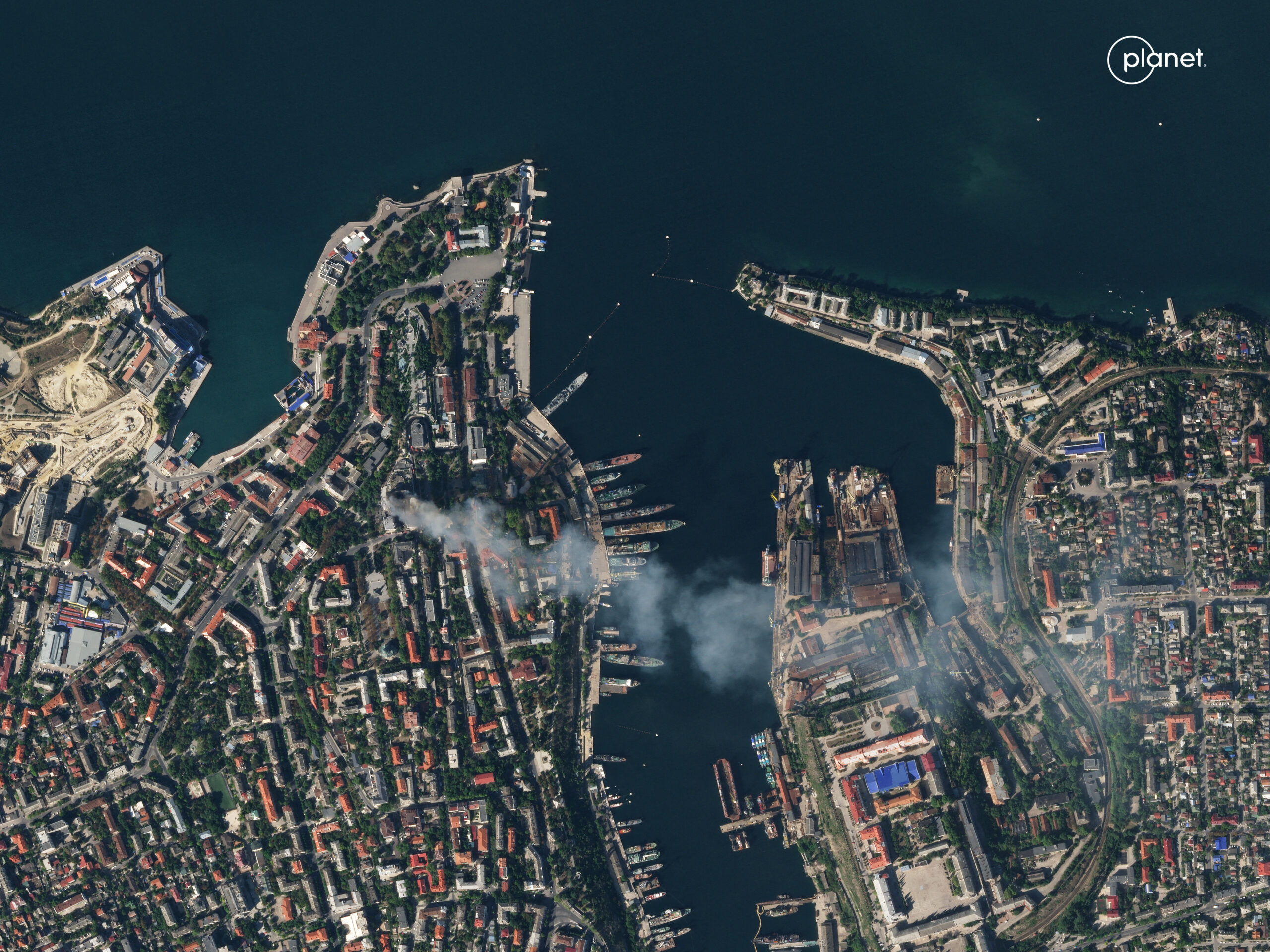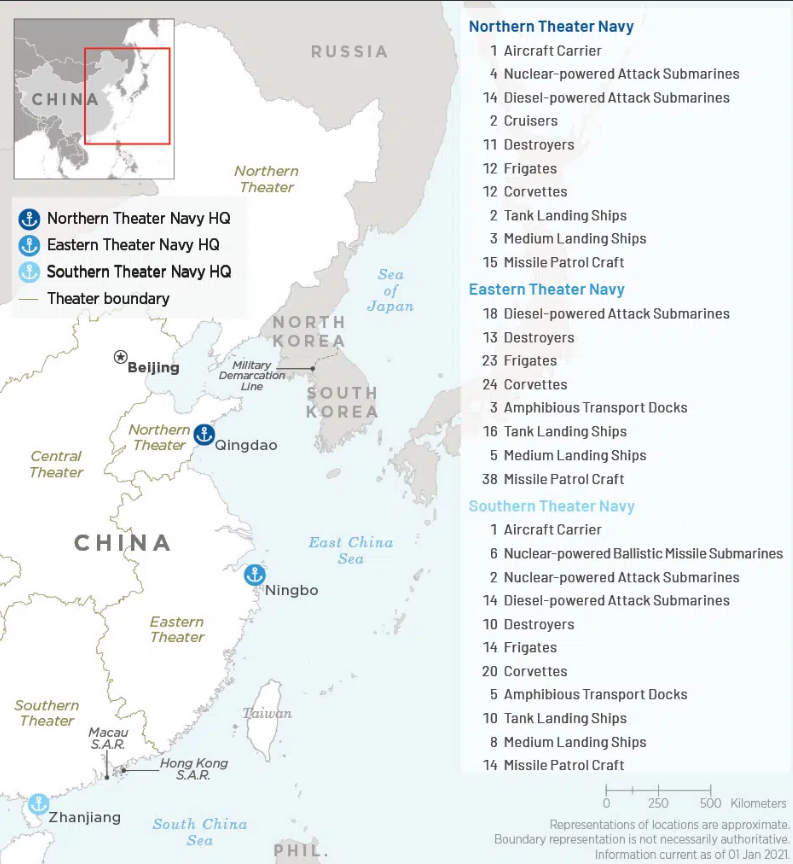By Hee-Cheol Jung
A fleet’s homeport performs vital functions that sustain naval power, including ship repair, resupply, maintenance, and training. The criticality of homeport infrastructure to naval power makes bases an attractive target. Neutralization of a homeport not only stands to neutralize the warships located at the homeport, but can significantly damage the operational longevity of fleets operating at sea.
The most infamous example of homeport strike is the attack on Pearl Harbor, highlighting how the major operational value of this type of attack can make for a critical war-opening move. The U.S. Navy considered similar strikes against its Soviet rival during the Cold War. In 1977, U.S. Navy Admiral Thomas Hayward, then commander of the U.S. Pacific Fleet, devised a strategy of directly attacking the homeport of the Soviet Pacific Fleet in Petropavlovsk on the Kamchatka peninsula by using a fleet of four carrier battle groups. The neutralization of the Soviet Navy’s Pacific Fleet homeport would not only help ensure the security of U.S. allies, it would also set the conditions for projecting power deeper into the Soviet homeland. Homeport strike has also prominently featured in the war in Ukraine, with strikes against Russian warships and naval infrastructure in the Black Sea Fleet’s Crimean homeport of Sevastopol. These strikes have been effective enough to force the relocation of Russian naval forces away from their traditional homeport and into less developed bases that are farther from the battlespace.

In a war with China, the U.S. would be able to leverage a much more credible threat of homeport strike compared to China, given how U.S. forces would be operating in an expeditionary nature far from home and in China’s front yard. This asymmetry may weigh heavily upon Chinese naval strategists, who must cope with the constricted geography of the first island chain and the close proximity of multiple U.S. allies to Chinese Navy homeports.
If successful, a homeport strike can neutralize most of the fleet based out of the homeport, but many conditions must be met to succeed. Naval bases can also feature substantial air defenses, extensive sensor coverage, and a sprawling complex of enabling infrastructure that poses more targets. Pierside warships may have sufficient readiness and weapons loadouts to quickly activate defensive capabilities and shoot down missiles even from their static locations. The challenges of homeport strike will be magnified if numerous pierside warships are able to combine their capabilities to thicken the air defenses and sensor coverage protecting the naval base. Naval bases are home to more than just warships, they often include substantial aviation assets as well, who can be more quickly dispersed across alternative infrastructure. Homeports may also be close to air force bases and airfields that allow numerous aircraft to quickly launch in support of defending the homeport, further complicating the challenges of attack.

Mass fires may be necessary to break through the dense defenses of a major naval base and inflict damage against its platforms and infrastructure. The carrier strike group in particular can generate a significant volume of fire that could meet the demands of homeport strike. The static nature of the warship targets also widens the extent of firepower that can be leveraged. Land-attack cruise missiles could be used to sink warships at the pier, whereas mobile warship targets would limit the suitable weapons to anti-ship missiles, which can require more complex seekers and killchains compared to land-attack missiles. In the case of the U.S. Navy, which fields thousands of land-attack cruise missiles but only a small number of truly long-range anti-ship missiles, homeport strike may be one of its few good options for sinking an adversary Navy from long range. Focusing on land-attack fires also widens the amount of force structure the U.S. Navy can apply to homeport strike by including numerous surface warships and submarines. Anti-ship missile strikes by comparison would disproportionately involve aircraft carriers and increase risk to the capital ship platforms the Navy can least afford to lose. The carrier-centric design of the U.S. Navy’s anti-ship firepower therefore encourages it to conduct homeport strike, otherwise the U.S. Navy may be required to increase risk to its carriers to pursue more challenging at-sea targets.
For naval forces to carry out a homeport strike, they may have to neutralize or bypass sea denial forces. In the 1980s, the U.S. Navy actively utilized the complex terrain of Norwegian fjords to frustrate the surveillance of the Soviet Union’s aerial maritime patrol force and simulate attacks on the Kola Peninsula, where the Soviet Northern Fleet’s homeport was located. For the attack on Pearl Harbor, the Japanese Navy employed a highly sophisticated deception plan designed to mislead the perceived whereabouts of its naval forces and maximize the element of surprise.
Modern U.S. naval forces should take inspiration from their Cold War predecessors. If a carrier strike group can operate from within allied littoral terrain that is proximate to rival naval bases, then it can leverage a wide variety of land-based force multipliers to improve its survivability, firepower, and detectability in support of homeport strike. Littoral geography and elevated terrain will complicate the adversary’s radar surveillance and the ability of hostile anti-ship missile seekers to close their killchains. Multiple critical Chinese naval bases can be held at risk by U.S. naval forces operating from within the maritime terrain of the Japanese home island of Kyushu. Figure 1 highlights the homeports of China’s three main fleets, allied and U.S. military bases, and the radius of carrier strike group reach when operating from allied littoral terrain.

This figure factors in the deployment of the MQ-25A unmanned aerial refueling tanker, which would extend the range of the air wing to a sufficient degree to carry out homeport strike. Similar support can also be made available by operating close to land and leveraging tanker aircraft operated by U.S. and allied air forces. Submarines can also be especially well-suited to homeport strike, whose proximity to targets may translate into a critical element of surprise that allows them to strike homeports at lower cost than more detectable forces. However, the U.S. Navy must also be mindful that the threat of homeport strike against allied bases may draw it into battles and postures that limit its flexibility.
Aside from cruise missiles, stealth aircraft can also play a valuable role in homeport strike. Stealth aircraft such as the F-35 and B-21 should theoretically be able to gain greater proximity to homeports than non-stealth aircraft, allowing them to deliver a greater volume of fire per platform. Rather than relying on non-stealth aircraft that can only fire a few expensive cruise missiles each from standoff range, stealth aircraft could launch several times more weapons from close range, such as by employing the Small Diameter Bomb or JDAMs. By increasing the available volume of fire, stealth aircraft could better allow forces to meet the difficult challenge of breaking through the dense air defenses that can protect naval bases.

There are multiple steps the U.S. Navy should take to improve its capability for homeport strike. These include fielding the MQ-25A unmanned aerial refueling tanker to increase the combat radius of the carrier air wing, and increasing the proportion of stealth fighters fielded within air wings, such as the F-35C. The range of missiles fielded by the air wing must be increased. The U.S. carrier air wing has little in the way of long-range land attack cruise missiles, which could be improved by adding more JASSMs to the inventory. The Spear 3 missile in particular will feature a useful combination of small payload size and long range, which will improve the operational flexibility and survivability of stealth aircraft by allowing them to deploy a large volume of fire while operating from standoff distances beyond air defense umbrellas.
Homeport strike should be envisioned as a joint mission that incorporates fires delivered from multiple services. The U.S. Air Force, Army, and Marine Corps are rapidly increasing their cruise missile inventories which will improve options for homeport strikes. Stand-in forces operating across the first island chain can be especially well-suited for holding China’s naval infrastructure at risk. Allies can also contribute to the mission, such as how the Japanese military is set to procure hundreds of Tomahawk missiles. The proliferation of cruise missile weaponry across multiple services and allies should improve options for homeport strike. However, China’s robust missile arsenal is also growing more capable, and its ability to launch homeport strikes of its own should not be underestimated.
Homeport strike has long been a decisive method in naval warfare. But its significant operational utility should be tempered by its highly escalatory implications. Homeport strikes can expand naval conflict from the sea to the shore, and inflict major casualties directly on the territory of targeted states. As nations ponder their options for homeport strike, they should consider whether the potential for escalation outweighs the possible operational gains, which may prove short-lived if a war intensifies into a prolonged conflict.
Hee-Cheol Jung is an undergraduate student of major in Electrical and Computer Engineering, School of Engineering, Rutgers University. From 2016 to 2018, he served in the Republic of Korea Navy, and honorably discharged with the final rank of Petty Officer 2nd Class. He has published in the Naval Engineers Journal.
Featured Image: Battleship Row on December 7, 1941, after the Japanese attack. The sunken and burning USS Arizona (BB-39) is in the center. To the left of her are USS Tennessee (BB-43) and the sunken USS West Virginia (BB-48). (U.S. Navy photograph, from the collections of the Naval History and Heritage Command)


China now has over half of total world shipbuilding. Hitting the bases is secondary to their overall ability to build and repair ships quickly. Additionally, large parts of that capacity are further inland like where they build their corvettes and amphibious Assault ships.
The plan here is extremely traditional, leaning far too much on history. Why would we attempt deep strikes with tactical aircraft originating from inside their assymetric bubble? These are exactly the targets we are developing hypersonics, ballistics, and the B-21 to address. Even then we will probably have higher priority targets for quite a bit when the balloon goes up.
Think non-kinetic. Can I get a graving dock with half finished ships flooded by sabotage or cyber attack? Maybe I do hat by getting a damn to release water rather than attack the primary target directly?
Using a weather analogy, I want our fleet sweeping in like a cold front, pushing their warm front out of the way. Just like a land battle with a front line. Used distributed ops to push back while driving into their bubble to disrupt the actions they hope to achieve under the bubble. Just like with Ukraine, we have to plan to use an economy of force to deny the enemy their objective. We will not be strong enough to do everything at once.
This is an important article because it broaches a previously taboo subject-first strike against Chinese naval assets rather than waiting to be attacked. Given short distances between China and the first island chain as well as missiles that are both highly accurate and fast, it’s obvious that whoever strikes first will achieve a real advantage.
It won’t be easy for the Chinese to be attacked first because they greatly lag us in recent first struck experience. From Pearl Harbor to the Battle of the Bulge, from the North Korean invasion of the South to the Chinese entry into the war, from Tet to Beirut and on to 9/11, no one is as capable of being surprised as we are.
If it comes to it, unfortunately, I hope they catch up.
Taboo because it means nuclear war.
So there’s that.
We’re far more likely to be on the receiving end of a “homeport strike” than the reverse. Our ports far more exposed, fewer in number, at any given time the majority of our Navy is sitting in port. Much of our naval construction/repair infrastructure is irreplaceable “one of a kind”, with zero redundancy.
How many Chinese merchant ships, loaded with containers inspected and loaded in Chinese ports, are offshore of our naval ports at any given time? Anyone think containerized missile systems are beyond Chinese tech capabilities? Or that they don’t already have them?
How many of our ports could be completely closed by sinking a large ship in an inopportune location?